
Join me as I share the best places to visit in China, from pandas in Chengdu and skyscrapers in Shanghai to the Great Wall in Beijing and the old streets of Lijiang. Learn why China is now one of the world’s top travel destinations.
I still remember when not many people wanted to travel to China. Back then, most tourists didn’t think of it as a dream destination. When people talked about China, the first thing that came to mind wasn’t the Great Wall or the food but the politics and toilets. As a Chinese Thai myself, the main reason people like me went there was to see our ancestral roots, not to travel. And honestly, we weren’t too excited about using the toilets either.
But that was a long time ago. Things have changed fast. China today is a completely different place. I once met a tour guide who has traveled around the world for more than 20 years, and he told me that China is now one of the best countries to visit. The country is huge, with all kinds of scenery. You can find snowy mountains that look like those in Switzerland, autumn forests that rival those in Japan, and modern cities that are more advanced than many other places in the world.
What makes it even better is how affordable it is. Traveling in China costs much less than going to Europe, Japan, or South Korea.
As someone who runs a travel company, I’ve noticed more Thais choosing China lately. Japan is still popular, but the cost difference is huge. Traveling in Japan can easily be twice as expensive as in China, while China offers just as much variety and comfort for a much lower price.
So, if you’re thinking about visiting China, this guide is for you. I’ll share some of the best places to go and a few travel tips to help you explore China more easily.
This article will take approximately 39 minutes to read. Don't have the time right now? No worries. Email the ad-free version of the article to yourself and read it later!
Disclaimer: This article may include links to products or services offered by ExpatDen's partners, which give us commissions when you click on them. Although this may influence how they appear in the text, we only recommend solutions that we would use in your situation. Read more in our Advertising Disclosure.
Contents
- Key Takeaways
- Why Visit China
- Planning Your Trip in China
- Best Places to Visit in China
- Chengdu
- Shanghai
- Beijing
- Lijiang and Shanggri-La (Yunnan)
- Other Places to Go in China
- What to Know Before Visiting China
- Best Time to Visit China
- Worst Time to Visit China
- Recommended Apps for Traveling in China
- Bad Parts of Traveling in China
- Now, on to You
Key Takeaways
- China has transformed into one of the very interesting countries to visit and travel to.
- Visa-free entry is now available for travelers from many countries, making it easier than ever to visit.
- The cost of traveling in China is much lower than in Japan or Europe, with great value for hotels, food, and transport.
- Chengdu is perfect for nature lovers and panda fans, while Shanghai showcases China’s cutting-edge technology and modern city life.
- Beijing highlights the country’s glorious past with landmarks like the Forbidden City, the Great Wall, and the Summer Palace.
- Lijiang and Shangri-La let you experience the charm of China’s ethnic diversity and Tibetan culture surrounded by mountains.
- China’s high-speed trains make traveling between cities fast and comfortable
- Google services don’t work there, so local apps like Amap and Alipay are essential.
- Avoid visiting during the Golden Week (first week of October) when attractions are packed with domestic tourists.
- While toilets and crowds can still be an issue in some areas, China’s mix of history, nature, culture, and innovation still makes it a rewarding destination to explore.
Why Visit China
If China hasn’t been on your travel list, maybe because of what you’ve heard in the past or because you were worried about the toilets, I want to share why it’s now becoming one of the most exciting and popular destinations, even among expats.
Visa
It’s now much easier to visit China than it used to be. In the past, most nationalities needed a visa to enter. But today, China has relaxed its rules, allowing travelers from many countries to enter visa-free for stays of 30 to 90 days.
Countries that currently enjoy visa-free entry include Brunei, France, Germany, Italy, Spain, the Netherlands, Malaysia, Switzerland, Ireland, Hungary, Austria, Belgium, Luxembourg, New Zealand, Australia, Poland, Portugal, Greece, Cyprus, Slovenia, Slovakia, Norway, Finland, Denmark, Iceland, Andorra, and Monaco.
Wikipedia has a good list for this.
Unfortunately, if you’re from the United States, you still need to apply for a tourist visa. The process is simple and can be done at the Chinese Visa Application Service Center (CVASC).
Keep in mind that visa regulations can change from time to time, so always check the latest information from your local Chinese embassy or consulate before you go.
Cost of Traveling
China is surprisingly affordable. It’s not as cheap as Thailand, Vietnam, or the Philippines, but it’s still much more budget-friendly than Japan or South Korea.
Here’s a quick look at average daily costs:
- Meals: around US$5 per meal at a decent restaurant
- Hotels: about US$35 per night for a good mid-range stay
- Metro rides: usually around US$1 per trip
A one-week trip in China, excluding flights, can cost around US$500 or less, depending on where you go and your travel style.
Massive Scale
Everything in China feels massive. The country itself is huge, and with such a large population, it’s no surprise that many things here are built on an enormous scale.
You’ll find some of the world’s largest structures and attractions, whether it’s an airport terminal, Disneyland, Universal Studios, indoor ski resort, or even theme parks here in China.
Nature
Nature in China is absolutely stunning. A friend of mine who works as a tour guide once said, “If you think Japan’s nature is beautiful, wait until you see China.”
Take Zhangjiajie National Forest Park, for example, the place that inspired the floating mountains in the movie Avatar. The stone pillars there rise hundreds of meters high, wrapped in mist and green forests. Or visit Furong Town in Hunan, a historic village built right on top of a waterfall.
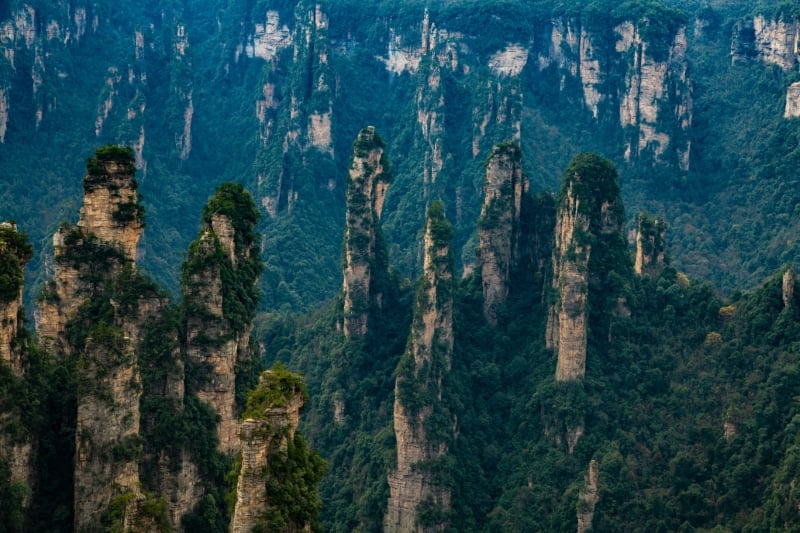
Because China is so large, you’ll find endless natural landscapes like mountains, lakes, deserts, and forests that keep every trip exciting.
Futuristic City
China’s cities are a world of their own. Many travelers come just to experience the technology and futuristic atmosphere.
Electric vehicles are everywhere, 3D billboards light up entire streets, self-driving cars, and almost everything is cashless. You can pay for food, transport, or even museum entry using your phone. In some attractions, your passport works as your ticket. In certain areas, you can even order food delivered by drones.
And then there are unique cities like Chongqing, a mountain city where buildings connect through sky bridges. You might enter a mall on the ground floor and find yourself on the 30th floor of another building a few steps later.
Culture
China’s culture and history are incredible. With over 5,000 years of civilization, you can find grand historical sites almost everywhere.
In Beijing, the Forbidden City and Summer Palace showcase imperial architecture at its best. The Great Wall of China stretches for thousands of kilometers, a true symbol of human effort. In Xi’an, the Terracotta Army remains one of the most fascinating archaeological discoveries in the world.
Each city has its own traditions, dialects, and cuisine, giving you a deep sense of how diverse and rich Chinese culture really is.
Getting Around
Traveling within China is easy and efficient. The railway network is one of the best in the world, fast, comfortable, and affordable. You can travel between major cities in just a few hours on high-speed trains.

Bus stations are modern and easy to navigate, usually with large digital boards showing routes in both Chinese and English. Taxis are also convenient and inexpensive. You can use Didi, China’s version of Grab or Uber, directly through the WeChat app.
The only downside is that foreigners can’t rent a car since it requires a Chinese driver’s license. But private car hire with a driver is available in most cities and quite affordable, making it easy to explore comfortably.
Planning Your Trip in China
Before we get into the best places to visit, let’s look at a few key things that will help you plan your trip. China is a huge and diverse country, so having a basic overview will make your trip smoother and more enjoyable.
Geography
China is the third-largest country in the world. It stretches from the east, near Hong Kong, Taiwan, and South Korea, to the north bordering Mongolia and Russia, and to the west where it touches Central Asian countries like Kazakhstan.
Because of its size, the geography and climate can vary greatly from one city to another. For example, winter in Beijing, which is in the north, can be freezing, while in Yunnan or Kunming in the south, the weather stays mild and pleasant all year.
Travel Style
Since China is so big, you can experience many different types of travel in one country.
- For city life, go to Shanghai or Beijing.
- For business, Guangzhou is the main hub.
- For history, Beijing and Xi’an are perfect, especially if you want to see the Terracotta Army.
- For nature, Chengdu, Lijiang, Zhangjiajie, and Kunming are great options
- For beaches, Qingdao is the most famous, though honestly, China’s beaches can’t really compare to those in Thailand or the Philippines.
Chinese Government Travel Rating
When researching destinations in China, you’ll often see places labeled with ratings like 5A or 4A. This is the official Chinese government tourism rating system.
A 5A attraction is the highest standard, similar to how Japan grades its beef. These places are well-managed, with good facilities, transport, and accommodations.
If it’s your first trip to China, stick with 4A and 5A attractions. They’re guaranteed to be worth visiting.
Best Places to Visit in China
With all that background and travel tips in mind, here are some of the best places to visit in China.
Chengdu
You might be surprised by my top pick. Most people’s lists usually start with Beijing, the capital, or Shanghai, the futuristic financial hub. But for me, Chengdu is number one.
There are many reasons why.
Panda City
First, it’s the panda city. You’ll see pandas everywhere, from giant panda statues climbing buildings in the IFS building to cute panda art taking selfies in the streets. Chengdu is also home to the Chengdu Research Base of Giant Panda Breeding, where you can see dozens of real pandas in a natural environment, not just one or two like in a zoo back home.

Cultural
Beyond pandas, Chengdu has a relaxing vibe and plenty to do. People’s Park in the city center is a great place to unwind. You can sip tea in one of the old teahouses, watch locals dance or play mahjong, and even visit the matchmaking corner where parents still post profiles of their children looking for love.
You can also explore Jinli Ancient Street, a lively cultural market filled with shops, lanterns, and snacks.
Nature
Chengdu also has many 4A and 5A-rated attractions nearby. The most famous ones are Jiuzhaigou, a valley of turquoise lakes and waterfalls often called “heaven on earth,” and Huanglong, known for its golden terraces and blue pools that look unreal.
You can also visit Mount Siguniang, often called “China’s Switzerland”.

Food
The food is another reason Chengdu tops my list. It’s the home of Sichuan cuisine, famous for its spicy “mala” flavor. I love spicy food, so it’s heaven for me. From hotpot to street snacks, every meal here is full of flavor.
Dam
Not far from the city is the Dujiangyan Dam, the oldest surviving irrigation system in the world. Nearby, don’t miss Dujiangyan Zhongshuge, one of the most beautiful libraries in the world. It feels like stepping into a world made entirely of books.
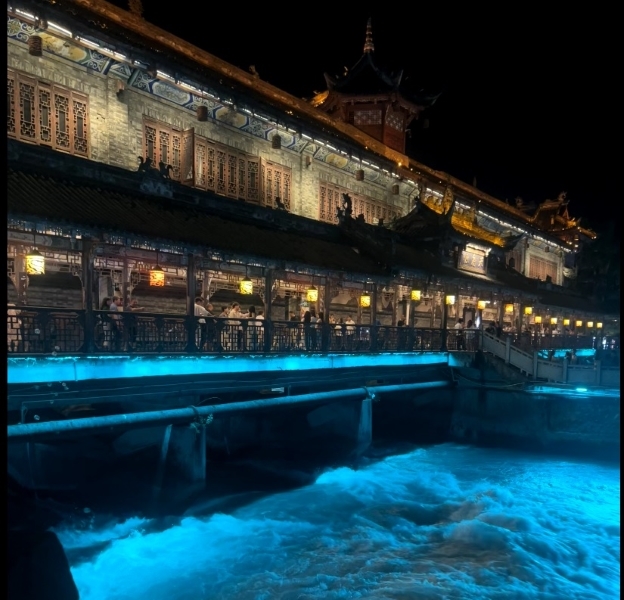
Travel Tip: If you have extra time, take the high-speed train from Chengdu to Chongqing. The trip takes only about one and a half hours, making it easy to explore both cities in a single trip. Chongqing has a completely different atmosphere and architecture, built across mountains with amazing night views.
Recommended Places in Chengdu:
- Chengdu Research Base of Giant Panda Breeding
- Jinli Ancient Street
- Wuhou Shrine and Temple of Marquis Wu
- People’s Park (and traditional tea houses)
- Wide and Narrow Alleys (Kuanzhai Xiangzi)
- Jiuzhaigou National Park
- Huanglong Scenic Area
- Mount Siguniang
- Dujiangyan Dam and Zhongshuge Bookstore
Best Time to Visit: Autumn (October to early November) is the best time to visit, especially if you plan to go to Jiuzhaigou. This is when the foliage turns colorful, and you’ll understand why people call it a paradise on earth.
Related article: The Complete Overview of Living in Chengdu as an Expat
Shanghai
Shanghai is the opposite of Chengdu. It’s one of the most developed cities in China and often called the “future city.” As a major hub for technology and innovation, it’s where you can see how fast China has developed. For many travelers, visiting Shanghai can be a real eye-opener.
It’s also very easy to travel here. English signs are available throughout the city, and many locals can speak English, especially in tourist areas. The city also has a big expat community.
The subway system in Shanghai covers almost every part of the city, making it convenient and beginner-friendly, especially if it’s your first time visiting China.

Technology
When I think about Shanghai, I think of it as a city of the future. You can see advanced technology everywhere. And no, I’m not just talking about 4D billboards you can find in other countries. Shanghai goes far beyond that.
MagLev Train
To start, right after landing at Shanghai Pudong Airport, you can experience one of the city’s most impressive technologies: the MagLev train.
It’s a magnetic levitation train that reaches 300 km/h within just two minutes. The ride from the airport to the city takes only about eight minutes. It’s not expensive either, costing around RMB 40 if you show your boarding pass at the ticket counter.
Robot and Drone Food Delivery
Once you’re in the city, technology becomes part of daily life. Robot food delivery is common, especially in hotels and residential areas. If you get hungry at night, you can order food through your phone, and a small delivery robot will bring it to your room.
In some districts, you can even order food delivered by drones, which is now being tested in partnership with major delivery apps. It’s fast, contactless, and surprisingly efficient.
Robot Taxis and Autonomous Buses
Transportation in Shanghai also feels futuristic. Robot taxis are already on the roads in some parts of the city. You simply enter your destination on your phone, and a self-driving car arrives to pick you up with no driver needed.
On top of that, autonomous buses are now being tested, giving a glimpse of what public transportation might look like in the near future.
Robot Police and Holographic Crosswalks
Even the streets are smart. At certain intersections, holographic or laser-projected crosswalks light up on the ground, making it safer and easier for pedestrians to cross. In some areas, you might even see robot police helping to direct traffic or patrol the streets.
Shanghai truly feels like a glimpse into the world of tomorrow.
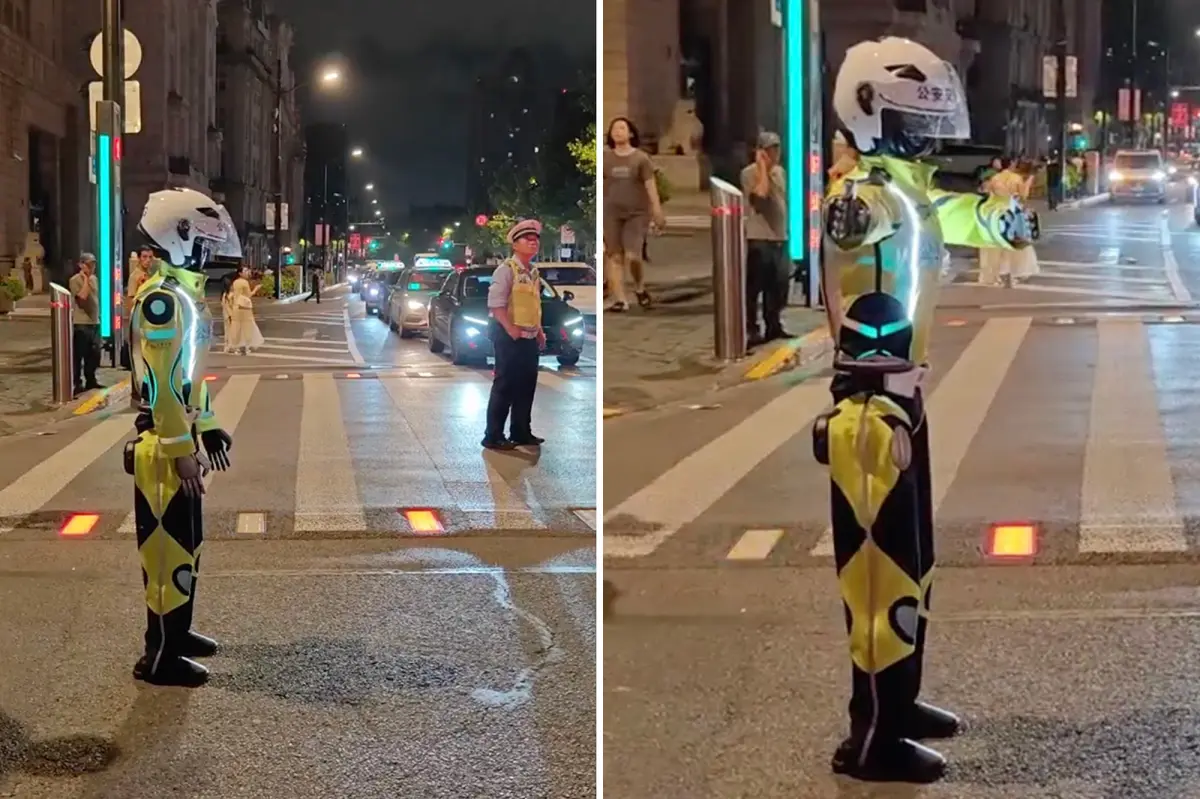
Architecture
Shanghai is also a very beautiful city. It’s a great mix of Western-style architecture, Chinese traditions, and modern technology. On one side, you see shiny skyscrapers, and on the other, you find traditional Chinese buildings standing beside Western European-style architecture.
The most iconic landmark is the Oriental Pearl TV Tower, which perfectly represents this blend of old and new.

One of my favorite places in Shanghai is The Bund. It’s lined with European-style buildings from the colonial era, and walking there feels like you’ve stepped into another country. I’m not sure if that’s good or bad, but it’s definitely fascinating. I recommend you to come here in the evening when the lights come on, and the view is absolutely stunning.
The famous Shanghai skyline is right across the river from The Bund. From there, you can see modern skyscrapers like the Oriental Pearl TV Tower, Shanghai Tower, and Jin Mao Tower lighting up at night. For me, it’s one of the most beautiful cityscapes in the world.
If you want to see some traditional Chinese neighborhoods, walk through Tianzifang, a lively walking street filled with art shops and cafés. You can also visit Yuyuan Garden, a peaceful classical garden right in the middle of the city.
Family Attractions
Shanghai is also a great destination for families, and the attractions here are on a completely different scale from most places in the world.
The most famous one is Shanghai Disneyland, the second-largest Disneyland in the world. Because it’s so spacious, it doesn’t feel as crowded as the ones in Tokyo or Hong Kong, but be ready to walk a lot. The park is huge, with themed zones, special parades, and rides that are unique to Shanghai.
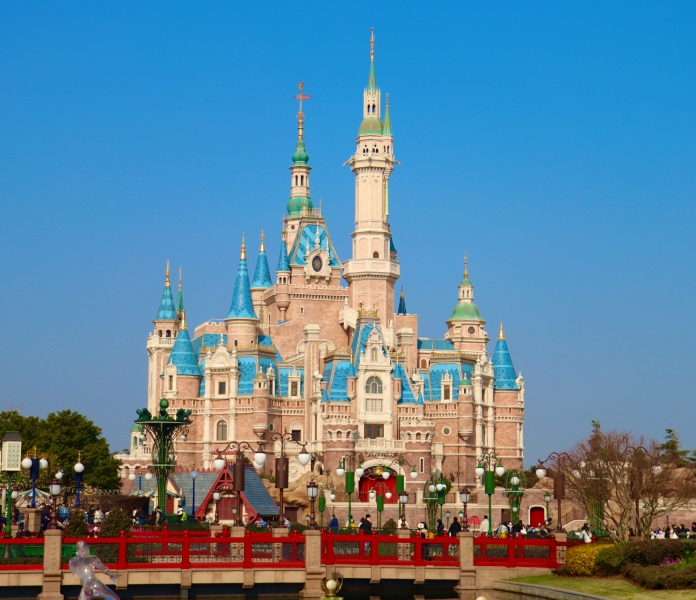
Another great spot is the Shanghai Ocean Aquarium, home to one of the longest underwater tunnels in the world at 120 meters. Walking through it feels like you’re surrounded by marine life from all over the world.
You can also visit Yaoxue Ice and Snow World, the largest indoor snow town and ski stadium in the world, where families can play in real snow and try skiing any time of the year.
And don’t miss the newly opened Legoland Shanghai, another great choice for families with kids. It’s full of creative rides, interactive zones, and colorful Lego-themed experiences that both children and adults will enjoy.
Recommended Places in Shanghai
- The Bund
- Oriental Pearl TV Tower
- Lujiazui Financial District and Shanghai Tower
- Yuyuan Garden
- Tianzifang
- Xintiandi
- Shanghai Museum
- Nanjing Road
- Shanghai Disneyland
- Shanghai Ocean Aquarium
- Yaoxue Ice and Snow World
- Legoland Shanghai
- Century Park
Best Time to Visit Shanghai
You can visit Shanghai any time of the year, except during the Chinese Golden Week in early October. For the best weather, especially if you plan to enjoy outdoor activities, come in spring (March to May) or autumn (September to November) when the temperature is mild and the skies are clear. It’s also not too hot or cold during these months.
Beijing
While Shanghai gives you a glimpse of the future, Beijing shows you the glorious past of China.
As the capital city, it’s where many of the country’s biggest historical changes began. You’ll find yourself surrounded by landmarks that have shaped China’s identity for centuries, from the Forbidden City and the Great Wall of China to Tiananmen Square and many other historic sites.
Visiting these places lets you see the depth of China’s history up close. Everything in Beijing feels grand and powerful. Even today, the scale is impressive. For example, Beijing Capital International Airport has one of the largest terminals in the world. Hospitals in Beijing are also big.
The Glorious Past of China
To me, Beijing is one of the most important cities in the world in terms of culture and history. Many historical sites here are still well preserved and give you a strong sense of China’s ancient power.
The Forbidden City (Palace Museum)
One of the most famous sites is the Forbidden City, also known as the Palace Museum. It’s the largest palace complex in the world. Built over 14 years by more than a million workers, it used precious materials gathered from across China.
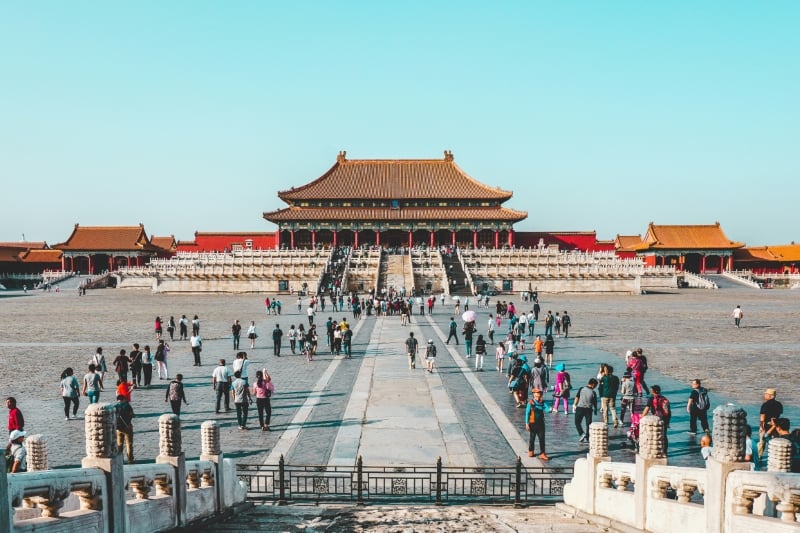
Inside, you can walk through grand courtyards where emperors once held ceremonies, see the Hall of Supreme Harmony where the emperor sat on the Dragon Throne, and visit the inner chambers where the royal family lived.
It’s called a “city” rather than a palace for a reason. Even if you walk the entire day, you won’t cover all the areas. Guided tours often take more than five hours, and many visitors give up before finishing because it’s simply too vast.
Tiananmen Square
Nearby, you’ll find Tiananmen Square, one of the most historically significant places in China. It has been the site of major national events and political moments throughout modern Chinese history.
The square is large enough to hold over a million people, and it’s surrounded by important landmarks such as the Monument to the People’s Heroes and the Great Hall of the People.
Summer Palace
Another must-see is the Summer Palace, a UNESCO World Heritage Site. It’s a masterpiece of Chinese landscape design, combining lakes, gardens, and palaces.
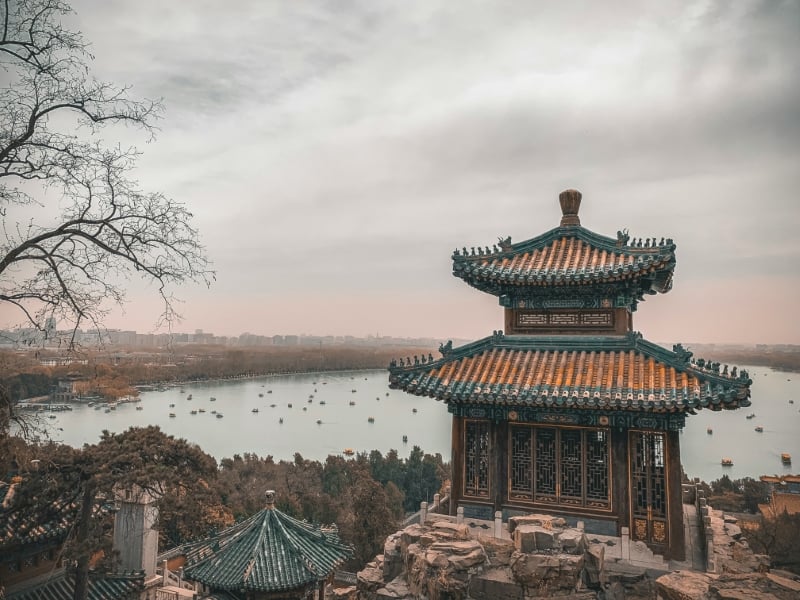
Great Wall of China
And of course, no trip to Beijing is complete without visiting the Great Wall of China. It’s one of the greatest man-made structures in the world with over 21,000 kilometers. There are many sections near Beijing you can visit, each offering a different experience. For example
- Mutianyu section: This is popular with its restored towers and offers a cable car ride to the top, with a toboggan slide on the way down.
- Badaling section: It is the most accessible and closest to the city
- Jinshanling section: It is more rugged and perfect if you want to hike to see the wall in its original form.
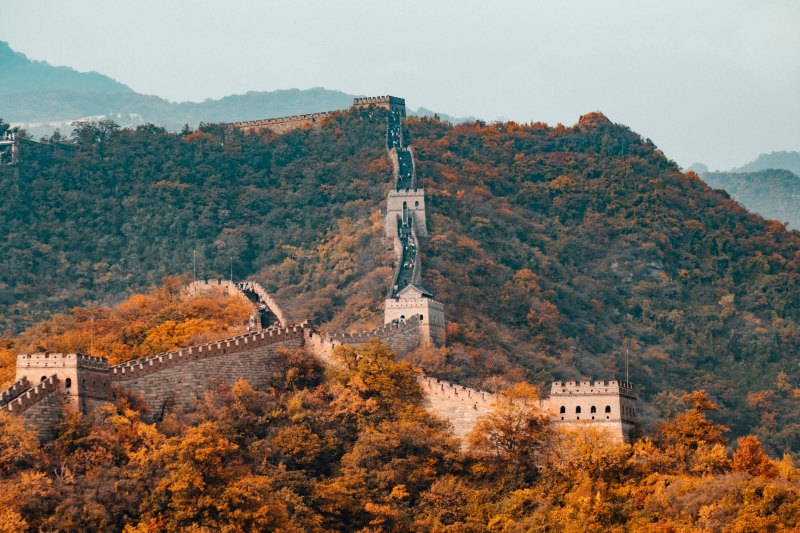
Other Places to Go in Beijing
In addition to the cultural attractions, Beijing also has many places you can go.
One of the highlights is Universal Studios Beijing, which is currently the largest Universal Studios in the world.
If you want to see traditional Beijing life, visit the hutong neighborhoods, especially Nanluoguxiang and Shichahai. These are walking streets with traditional houses, small cafés, and street food stalls. These neighborhoods give you a feel of what old China used to be like.
For something more artistic, check out the 798 Art District. It’s a former factory area that has been turned into a creative hub filled with modern art galleries, studios, and trendy cafés. It’s a great place to spend an afternoon if you love art or photography.
Recommended Places to Go in Beijing
- The Forbidden City (Palace Museum)
- The Great Wall (Mutianyu or Jinshanling sections)
- Tiananmen Square
- Summer Palace
- Hutong neighborhoods (Nanluoguxiang, Shichahai)
- 798 Art District
- Universal Studios Beijing
Best Time to Go to Beijing
You can visit Beijing any time of the year, but it’s best to avoid winter, which runs from December to February, as it can get extremely cold since Beijing is located in the north of China.
Lijiang and Shanggri-La (Yunnan)
Lijiang is the very first city that made me want to visit China. I once saw a photo of Lijiang Old Town, filled with traditional wooden houses, stone-paved streets, and red lanterns, and I was amazed by how beautiful it looked. But Lijiang is much more than just a picturesque old town. It has a completely different atmosphere from other cities in China.
If Beijing represents the roots of Chinese culture, Lijiang reflects the charm of China’s ethnic diversity with strong Tibetan influences. The city is located in the southwest of China, close to Tibet, and you can clearly see the blend of cultures everywhere.
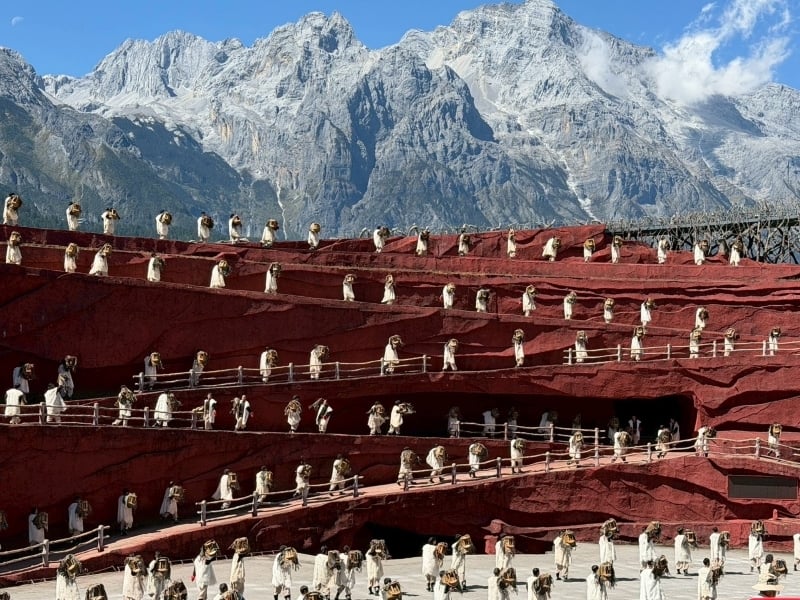
In addition to its Tibetan heritage, Lijiang is home to several ethnic minority groups, especially the Naxi people, who have their own unique language and ways of life.
Because of its mountain terrain, Lijiang is surrounded by breathtaking natural scenery. One of the most famous landmarks is Jade Dragon Snow Mountain, a snow-covered peak that dominates the skyline.
Tip: To get to Lijiang, you can first take a flight to Kunming and then take a high-speed train from Kunming to Lijiang, which takes only about 3 hours.
Charming and Spiritual Cities
Lijiang Old Town, a UNESCO World Heritage Site, is the highlight of any trip to this region. It’s a town of the Naxi minority people, beautifully preserved and full of character. Walking through its narrow alleys, stone-paved streets, and traditional brick houses feels like stepping back in time.
However, be prepared. The town’s layout can be confusing, and it’s quite easy to get lost in its maze-like streets.
Outside of Lijiang, you can take a bus to Shangri-La, a Tibetan town deeply influenced by Tibetan culture. It feels more like Tibet than China, with prayer flags fluttering, yak butter lamps burning, and locals wearing traditional Tibetan clothes.

One of the most impressive landmarks here is the Songzanlin Monastery, the largest Tibetan Buddhist monastery outside of Tibet. The golden roofs and tiered buildings can be seen from many parts of the town, and the peaceful atmosphere makes it one of the most spiritual places you can visit in China.
Mountains
Because Lijiang sits in the mountains, there are many natural attractions nearby that are truly breathtaking. The most famous is Jade Dragon Snow Mountain (Yulong Snow Mountain). You can take a cable car up the mountain for panoramic views, but what makes this place even more special is the Lijiang Impression Show, China’s largest open-air performance.

The show features hundreds of local performers from different ethnic groups, including the Naxi, Yi, and Tibetan people, showcasing their culture through traditional songs and dances with the mountain as a backdrop. It’s one of the most memorable cultural experiences in China.
In addition to Jade Dragon Snow Mountain, there are other scenic spots worth visiting such as Black Dragon Pool Park, famous for its reflection of the snow mountain, Tiger Leaping Gorge, one of the deepest gorges in the world and perfect for hiking, and Meili Snow Mountain, another sacred peak admired by Tibetan Buddhists.
Tip: Get a good night’s rest before visiting the mountains in Lijiang. Altitude sickness is common here due to the high elevation. It’s also a good idea to buy an oxygen bottle, which is easy to find in local shops. It really helps, especially if you’re planning to go up Jade Dragon Snow Mountain.
Recommended Places to Go in Lijiang
- Lijiang Old Town
- Shangri-La
- Songzanlin Monastery
- Jade Dragon Snow Mountain and Lijiang Impression Show
- Black Dragon Pool Park
- Tiger Leaping Gorge
- Meili Snow Mountain
Best Time to Go to Lijiang
The best time to visit Lijiang is during spring (March to May) and autumn (September to November) when the weather is cool and the skies are clear. Avoid July and August, which is the rainy season, since heavy rain can cause landslides in mountain areas. Winter is colder and less crowded, but some mountain areas may be closed due to snowstorms.
Avoid the rainy season in summer, especially in, as heavy rain can cause landslides in mountain areas. Winter can also be cold, but it’s less crowded and offers beautiful snow views on the surrounding peaks.
Other Places to Go in China
Since China is such a huge country, it’s impossible to list all the amazing destinations here. But if you have extra time, these are a few more places worth adding to your travel list:
- Zhangjiajie: Famous for its stunning pillar-like mountains in Tianmen Mountain and Zhangjiajie National Forest Park, which inspired the floating mountains in the movie Avatar. You can visit the Avatar Hallelujah Mountain and walk through Heaven’s Gate, a massive natural arch high up in the cliffs.
- Chongqing: The only city in the world where the metro train passes through a building. It’s also famous for Chongqing Hongyadong, spicy hotpot, and dramatic hilly landscape. Taking a Yangtze River night cruise here is one of the best ways to see the city lights.
- Furong: An ancient town built right on top of a waterfall. You can easily combine a trip to Furong with Chongqing or Zhangjiajie, as they’re all in the same region.
- Guangzhou: The heart of international trade and manufacturing in China. If you’re interested in business, shopping, or want to see the global side of “Made in China,” this is the place to be.
- Shenzhen: Known as China’s Silicon Valley, Shenzhen is another “future city” filled with tech innovations, skyscrapers, and creative districts. It’s also great for shopping.
- Xi’an: One of China’s oldest capitals and the starting point of the Silk Road. It’s best known for the Terracotta Army, thousands of life-sized clay soldiers built to protect the first emperor, Qin Shi Huang, in the afterlife.
What to Know Before Visiting China
There are a few important things to know before traveling to China. These will make your trip much easier and help you avoid common mistakes that first-time visitors often make.
Navigation
Google services, including Google Maps, don’t work in China. If you are iPhone user, you can keep using your Apple Map. However, if you are an Android user, you’ll need to use local apps instead. I recommend Amap. It works similarly to Google Maps, but you should download it before your trip since it can be tricky to install or switch to English once you’re there.
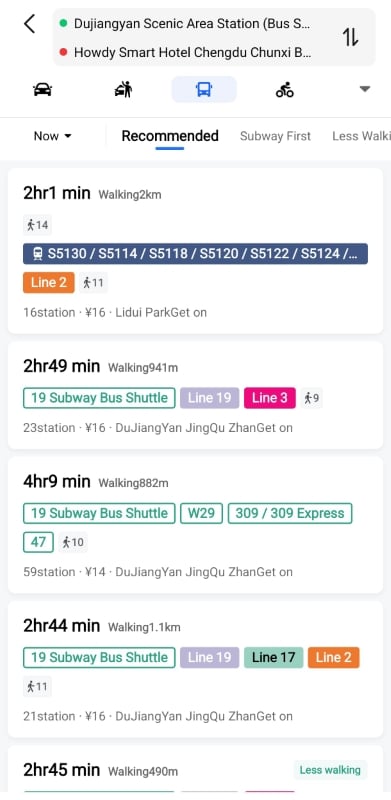
The app is mostly in Chinese, but there are helpful tutorials on YouTube that can show you how to use it.
Tip: The place name in English can be different from its Chinese name. I recommend saving the attraction names, especially your hotel name, in Chinese as well and using them when searching in your apps.
Transportation
Getting around China is easy and affordable. The country has one of the most advanced railway systems in the world. High-speed trains connect major cities efficiently, and subways in big cities like Chengdu, Beijing, and Shanghai are modern and inexpensive.
A subway ride in Chengdu, for example, costs less than US$1. You’ll likely use a mix of trains, taxis (booked through Didi on WeChat), and buses for most of your trip.
For the metro app, you can use the Amap application. Or you can download a metro app specifically. MetroMan China is recommended.
Public Toilets
One of the biggest complaints people used to have about China was its public toilets. In the past, many restrooms didn’t have doors, and cleanliness was a big issue. Sometimes, you could even see or smell more than you wanted to.
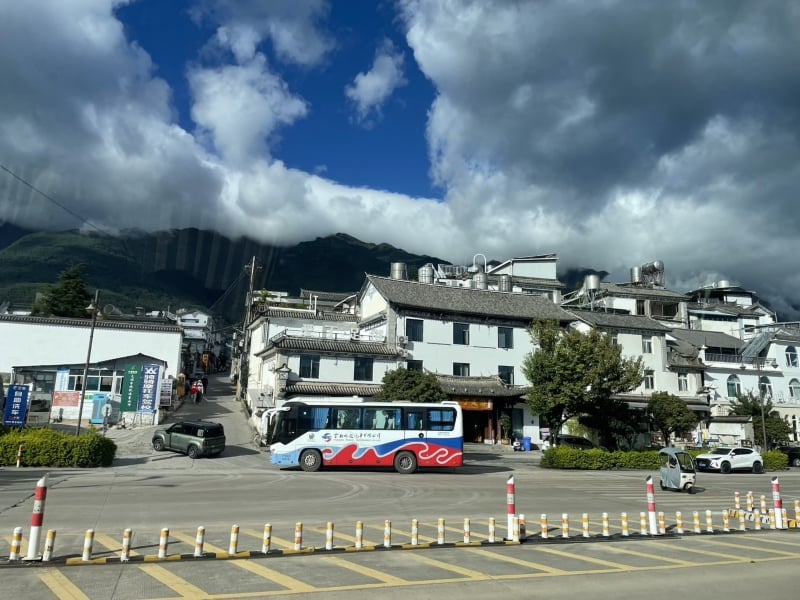
The good news is that things have improved a lot. In cities and tourist attractions like national parks, toilets are now generally clean and modern. However, you might still encounter older-style toilets at highway rest stops or in small towns, so it’s best to carry tissues and hand sanitizer just in case.
Reservation
In China, you can easily reserve tickets for national parks, trains, and buses in advance through apps like Trip.com or Klook.
After you book online, there’s usually no need to pick up a physical ticket. Just bring your passport to the entrance or station and scan it at the gate. The system will automatically recognize your booking, and you can go straight in.
Paying
China is almost completely cashless. In many places, even small food stalls no longer accept cash. Instead, everyone pays by scanning QR codes using Alipay or WeChat Pay.
Before your trip, download both apps and link them to your international credit card. You can also connect them to travel cards like Wise, which works well for tourists. Once set up, you’ll be able to pay for just about anything, from street food to metro rides, just by scanning your phone.
Best Time to Visit China
If you want to see nature, October is the best month. The foliage is beautiful, especially in Chengdu, Lijiang, and Kunming.
Winter is the low season because many areas get too cold. Some places that look stunning in autumn, like Jiuzhaigou and Huanglong, become frozen waterfalls in winter, which can be disappointing. Also, ski resorts in China aren’t as developed as those in Japan.
If you’re visiting for city life, you can go any time of the year.

Worst Time to Visit China
While October is generally the best month to see nature, there’s one week you should avoid if possible, the Golden Week. It usually falls during the first week of October and is one of the biggest national holidays in China.
During this time, you will see millions of Chinese people travel across the country. Trains, hotels, and attractions are packed, and prices can double or even triple. Popular spots like the Great Wall, Zhangjiajie, or West Lake in Hangzhou can be so crowded that it’s hard to even walk around.
Recommended Apps for Traveling in China
One of the biggest challenges when traveling in China is that Google services don’t work there. This includes Google Maps, Gmail, and even Google Translate unless you download the language pack in advance. WhatsApp also isn’t commonly used, and most payments are cashless through Chinese apps.
Here are four apps you should install before your trip:
- Amap: The Chinese version of Google Maps, accurate and widely used.
- Alipay: The most common payment app for shops, restaurants, and attractions.
- WeChat: The all-in-one app used for chatting, booking taxis via Didi, and making payments.
- Translation App: Any translation app works, but if you use Google Translate, download the Chinese language pack before arriving.
Some travelers also install a metro app for navigating big cities and a VPN to access social media or Google. That’s completely optional, but it can make your trip more convenient.
Bad Parts of Traveling in China
While China is an amazing country to explore, it’s not perfect. There are a few downsides you should be aware of before traveling.
- Smoking: People smoke almost everywhere, even in places with “No Smoking” signs. Although the situation has improved over the years, smoking indoors is still common. When booking accommodation, always look for a non-smoking hotel. Otherwise, the smell can linger in your room or hallways.
- Crowds: With more than a billion people, China can get extremely crowded. Popular attractions, especially during weekends or holidays, are often packed with tourists. It’s part of the experience, but if you prefer quiet spots, try visiting early in the morning or traveling off-season.
- Navigation: Since Google Maps doesn’t work in China, you’ll need to use alternatives like Amap or Baidu Maps. These apps work well but are not as user-friendly if you don’t read Chinese. Always save the Chinese names of your destinations on your phone, so you can show them to taxi drivers or locals.
- Toilets: Public toilets in rural areas can still be a challenge. Some older ones have no doors and may not be very clean. Some people sometimes open an umbrella for privacy while using them. In cities, things are much better, but it’s still a good idea to carry tissues and hand sanitizer just in case.
Now, on to You
I hope this article gives you a good overview of some of the best places to visit in China. Of course, everyone has their own travel style and preferences, but aside from a few downsides, China is a great country to explore. It’s vast, diverse, and full of things to do, from ancient cities and snowy mountains to futuristic skylines and quiet villages.
Happy travels, and I hope your trip to China will be as memorable as mine. And don’t forget to get travel insurance before your visit too.








